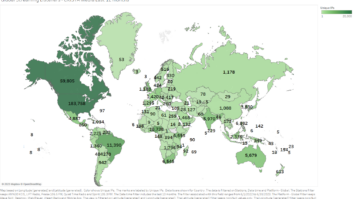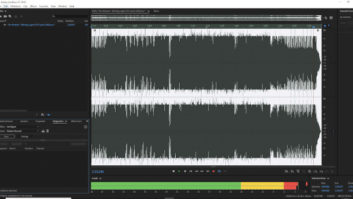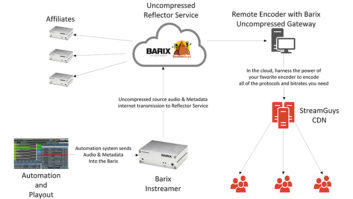The author of this commentary is a consultant and co-chair of the Audio Engineering Society’s Technical Committee for Broadcast and Online Delivery.
Loudness normalization has been a “go to” complaint for many critics of media. The problem was attacked early in this century when Congress introduced the Commercial Advertisement Loudness Mitigation Act — the CALM Act — to try to normalize television audio and ads inserted by the cable providers (I realize this is an oversimplified description).
The Advanced Television Systems Committee led the way in writing the loudness rules. The Audio Engineering Society introduced Recommended Loudness Practices for Audio Streaming (TD-1004) and Over the Top Television (OTT) (TD-1005 and TD-1006).
TD-1005 and TD-1006 led to a standard called AES71 (which is for content delivery and distribution). Then the Consumer Electronics Association aligned with that standard to create ANSI/CTA-2075 to cover playback on devices.
Yes, much has been done for the topic of loudness.
But wait; now there’s more.
As reported by Radio World’s sister site nexttv.com, Rep. Anna Eshoo (D-Calif.) is now saying that there should be a CALM Act for OTT and streaming services.
The advantage of an act over a standard is easy: An act is an enforceable law, standards are not!
If Congress and most listeners do not like commercials being 3 dB or more louder than the content, why do it? Why not create a more enjoyable experience?
Currently the Audio Engineering Society’s Broadcast and Online Delivery Technical Committee is in the process of revising TD-1004 and also plans to introduce a Loudness Education Website.
Why is loudness important? Easy: You do not want to invite a listener to adjust the volume knob when different sources are played. You also do not want audio levels to differ, upsetting the enjoyment for the listener.
How do you quantify loudness? With a loudness meter. This meter will be read in LUFS or LKFS. There is no difference between LKFS and LUFS.
What levels are acceptable? For video streaming (and OTT), –24 LUFS is the accepted level. For audio-only streaming, –19 LUFS is the current accepted level.
With the introduction of a metadata-controlled loudness level, this will most likely be brought “in line” with video.
Come on, stream providers, do the right thing! Congress has much more important matters to take care of, especially when we can police ourselves. Hopefully the industry can do so before another CALM Act is created.
Comment on this or any story. Email [email protected] with “Letter to the Editor” in the subject line.












